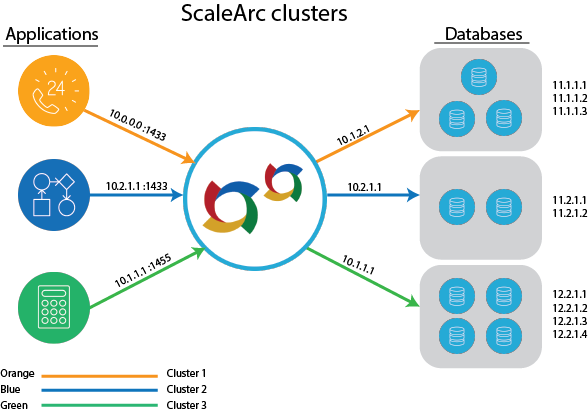This section and its subpages present stepped instructions on how to create and manage clusters that demonstrate ScaleArc's powerful functionalities such as load-balancing, zero downtime, and auto failure. Where appropriate, we have provided links to ScaleArc's Knowledge Base articles that cover additional configuration options in these areas.
What is a ScaleArc cluster?
A ScaleArc cluster is an 'endpoint group.' Each ScaleArc cluster serves as a unique logical load balancer. It is a logical combination of TCP/IP address and TCP port number created to manage the interaction between clients and database servers.
The ScaleArc cluster acts as a full SQL-aware proxy. For supported traffic types, the cluster maintains TCP connections between itself and the client/application servers while also maintaining separate TCP connections to the configured database servers.

This core technology allows ScaleArc to split Read and Write traffic among available database servers and manage connection pooling and reuse, database user authentication offload, SQL result caching, query routing, SQL firewall functionality, and sharding.
All these features are managed through the control panel on the ScaleArc Graphical User Interface (referred to as the ScaleArc dashboard).
Additionally, each ScaleArc cluster is a unique user process. In a multi-cluster configuration, you can start or stop a cluster without impacting traffic on another cluster.

Comments